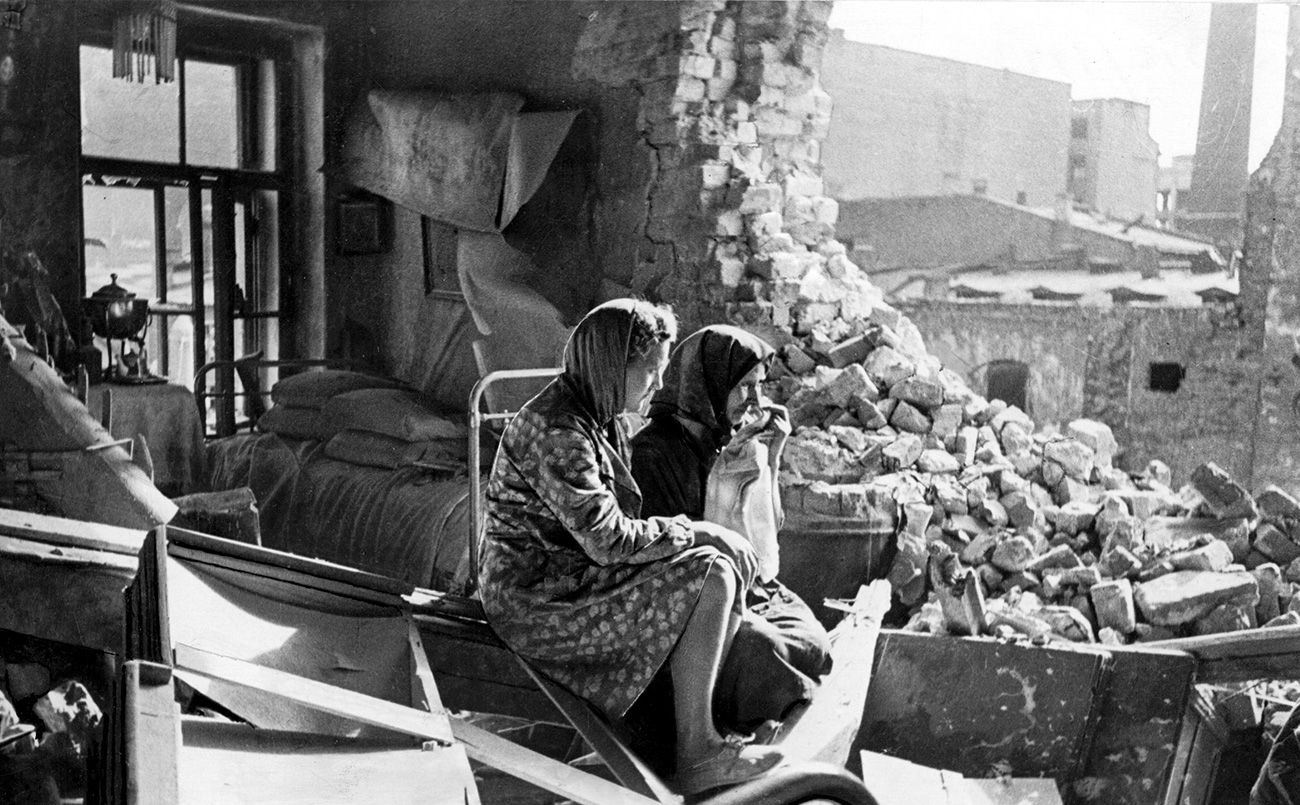
1942: Two women sitting among the debris in the aftermath of the German bombardment of Leningrad. Trying to compel the Russian defenders to surrender, the German troops indiscriminately bombarded the city which resulted in enormous losses among civilians.
Getty imagesThe Nazi siege of Leningrad, the Soviet Union's second largest city after Moscow, began on September 8, 1941 and lasted until January 27, 1944 (though the blockade was partially breached on January 18, 1943).
Isolated from the outer world, the city lacked food and fuel. Lake Ladoga was the city's only link with the outside world, ensuring that precarious deliveries of urgent supplies could be made by water in summer and over ice in winter.
Hundreds of thousands of residents died of hunger and cold during the first winter of the blockade, even though makeshift hospitals and canteens had been set up everywhere. Residents planted kitchen gardens, which were guarded round the clock.
 Getty images
Getty images
The Germans tried to shell and bomb the city into submission. Most of Leningrad's buildings were damaged, thousands of people were killed and tens of thousands wounded.
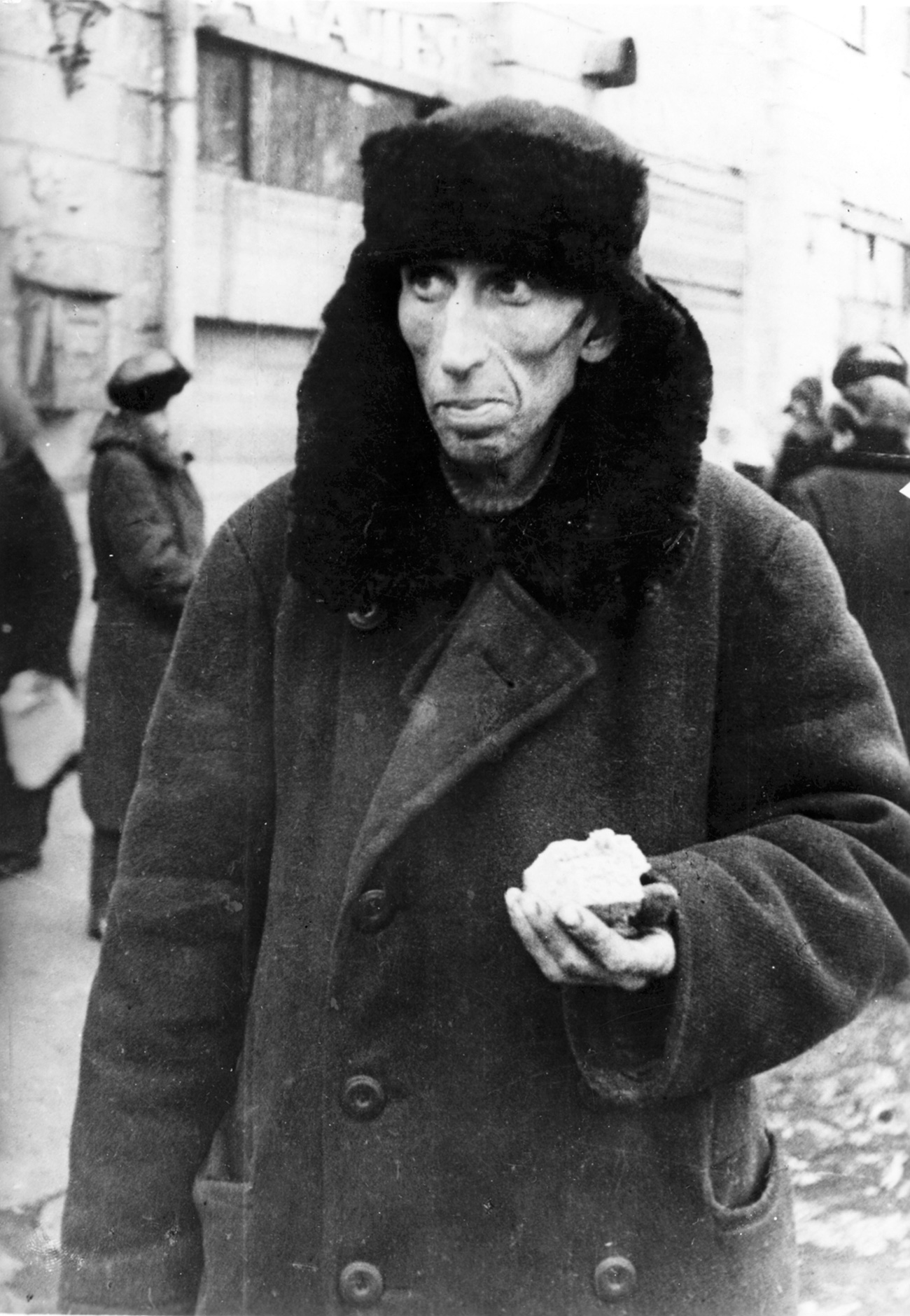 Getty images
Getty images
In November 1941 Leningrad started experiencing food shortages. Food stamps had long been introduced for more equal distribution of the shrinking stocks of foodstuffs. Around 780,000 residents died of cold and hunger during the first winter of the siege.
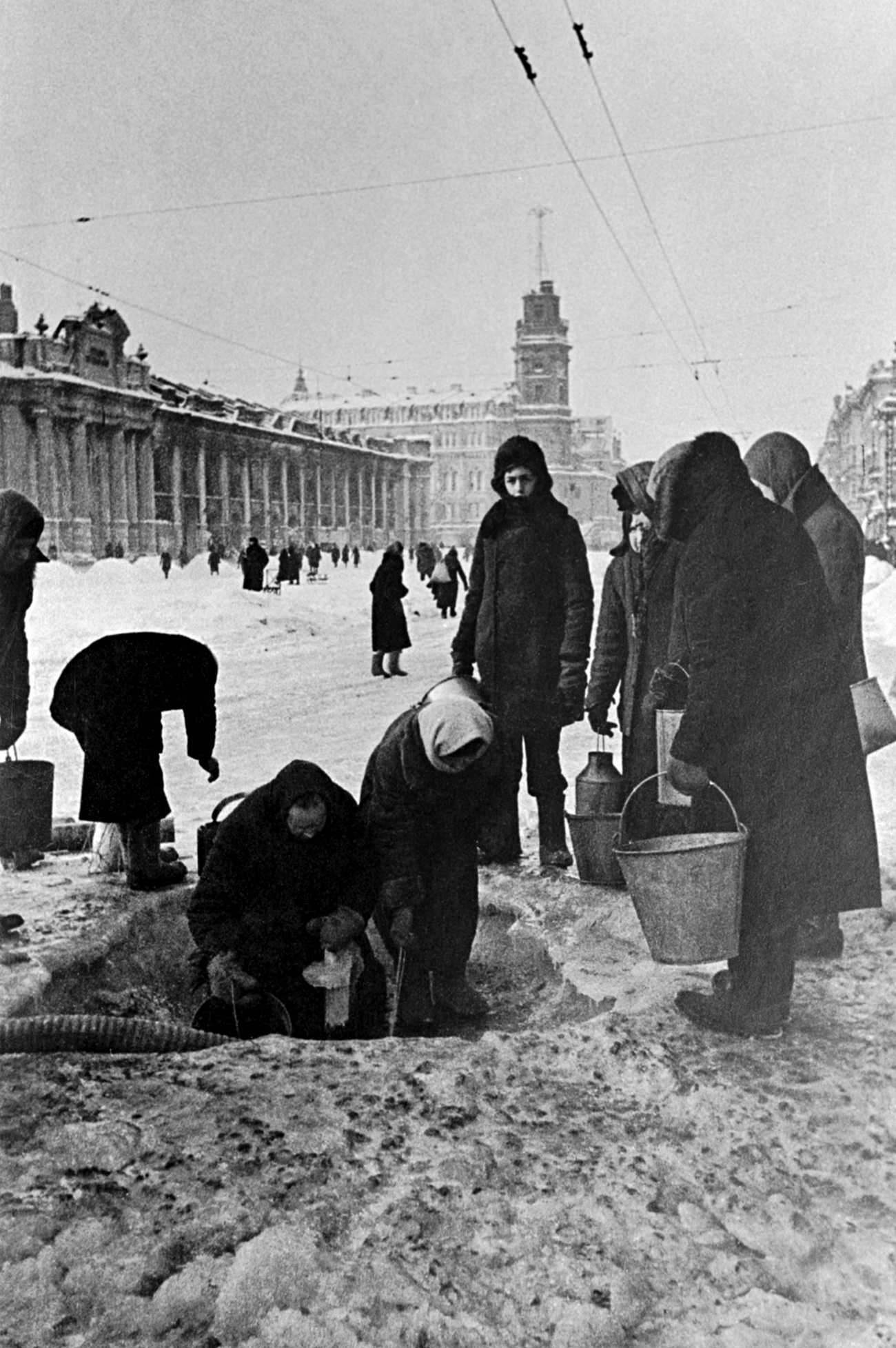 Boris Kudoyarov/RIA Novosti
Boris Kudoyarov/RIA Novosti
The city's water supply was disrupted, so residents had to collect water from cracks in the asphalt on Nevsky Prospect caused by artillery fire.
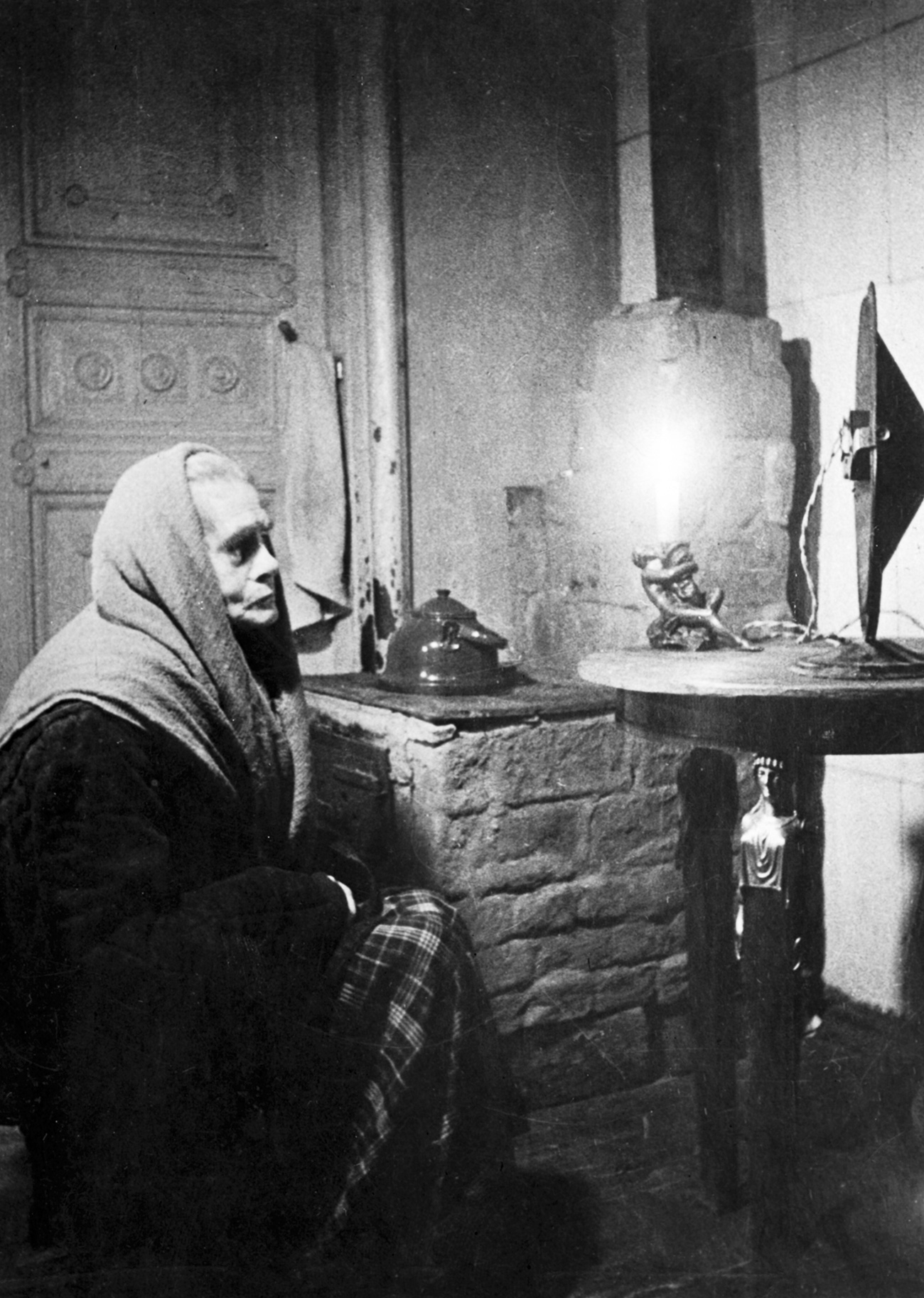 Getty images
Getty images
During the hardest days of winter, when there was neither heating nor electricity, people would tune into radios for news of the outside world.
 Getty images
Getty images
Residents rarely ventured out unless they had to because they were often too emaciated to cover even short distances. Faint with hunger, many collapsed and died from exposure to the cold. The corpses of the dead were collected from the streets and taken away.
 Anatoliy Garanin/RIA Novosti
Anatoliy Garanin/RIA Novosti
To keep up morale, the Musical Comedy Theater performed for the public in the city's Alexandrinsky Theater. Prominent Soviet pianist Dmitry Shostakovich wrote his world-famous Leningrad Symphony No. 7 during the siege.
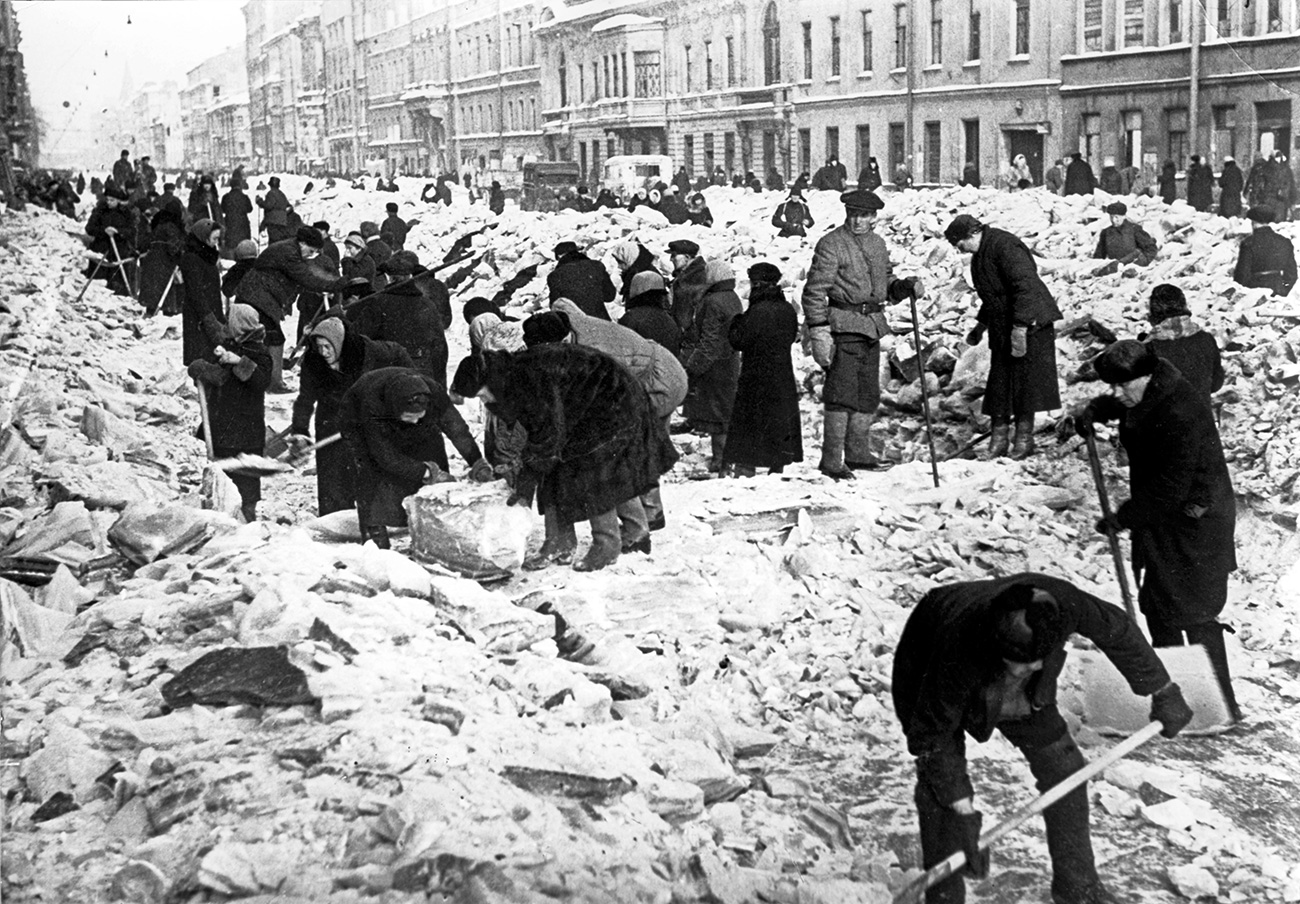 Getty images
Getty images
Trenches were dug and barricades erected on the outskirts of Leningrad to defend the city from all sides. Everyone did his or her bit. Residents also made a point of keeping their city tidy: They kept streets clear of snow, ice, and dirt.
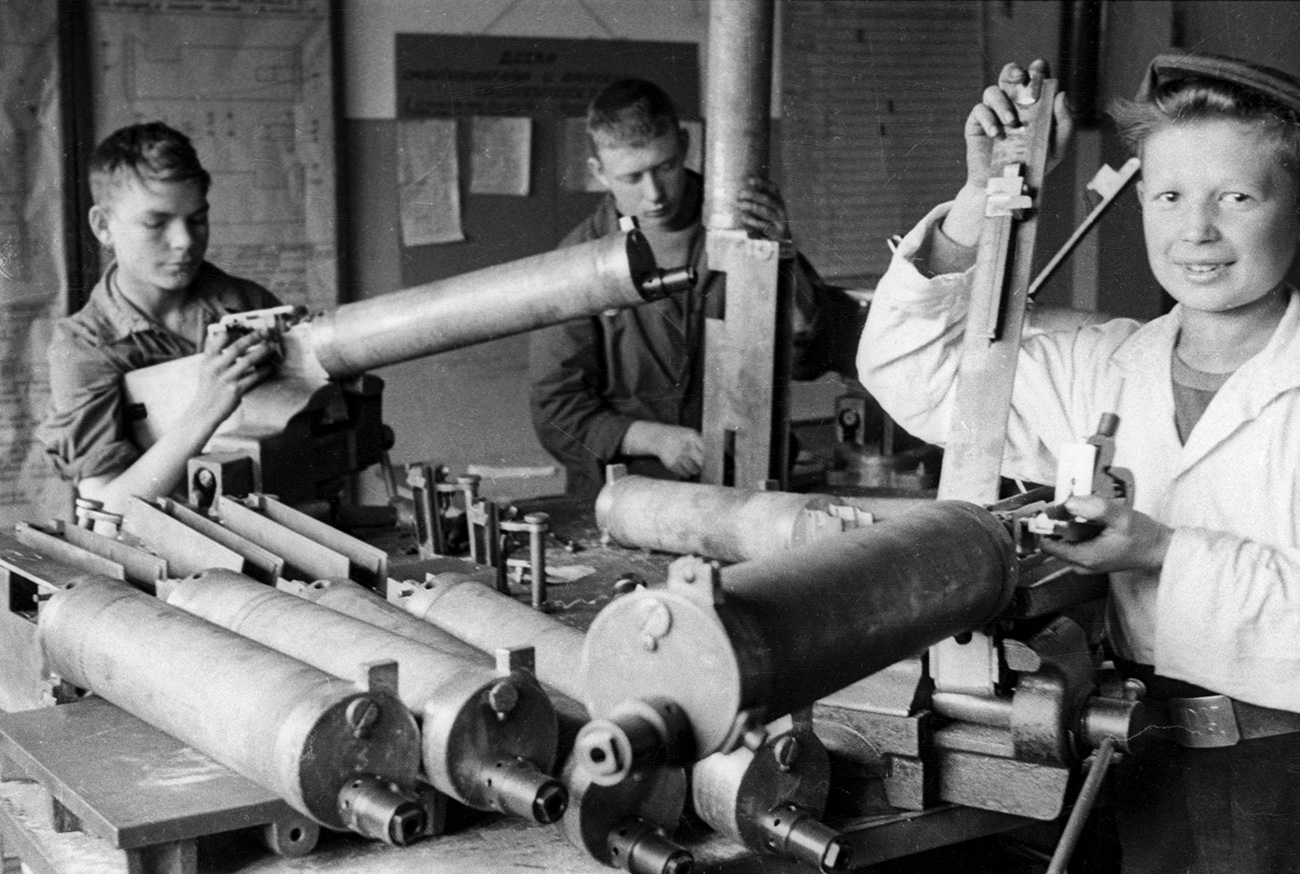 Grigoriy Chertov/RIA Novosti
Grigoriy Chertov/RIA Novosti
Children who had lost their parents and found themselves trapped inside Leningrad were sent to orphanages; whenever possible, school classes were organized for them. Often, however, children simply helped adults working in factories. At the Linotype factory children assembled machine-guns for the frontline.
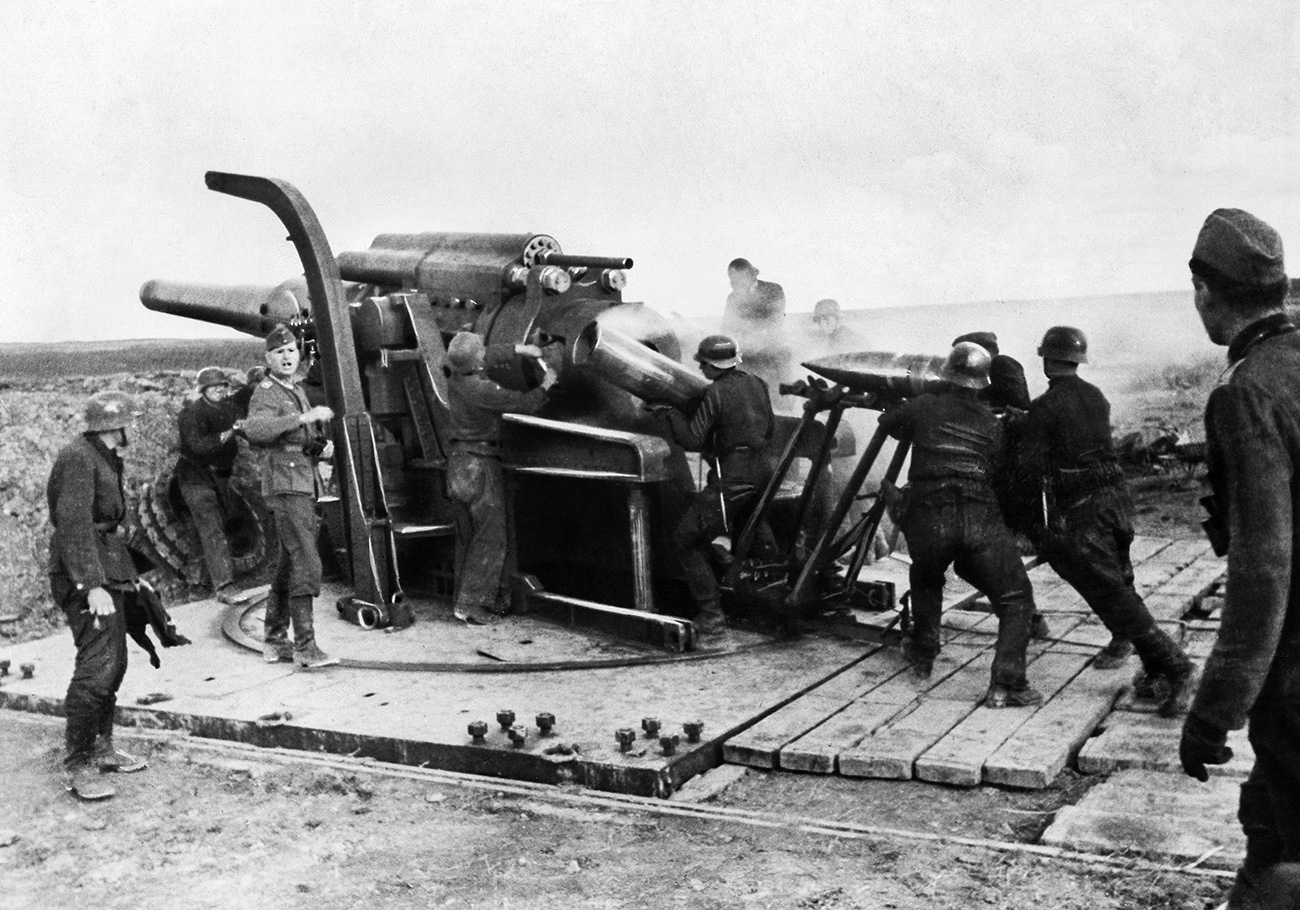 Getty images
Getty images
German troops load shells in a heavy artillery piece. Similar ordnance and artillery guns were used to protect the city and throughout the Eastern Front.
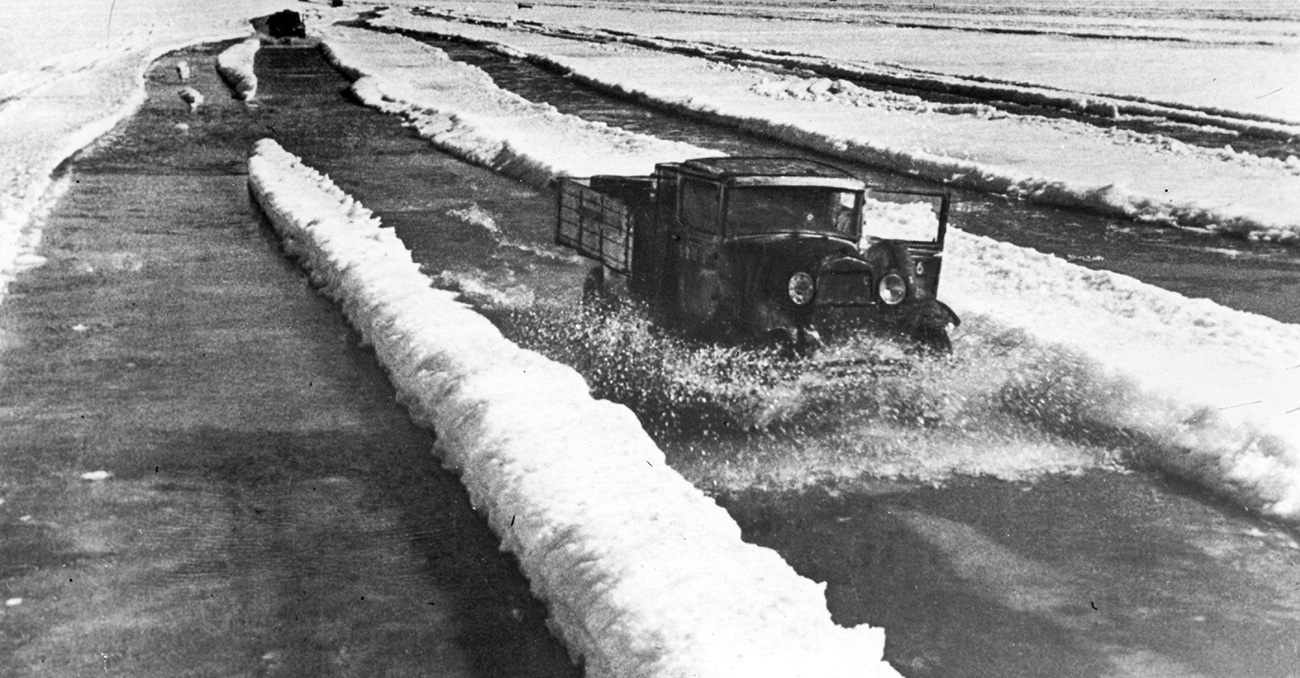 Getty images
Getty images
The only lifeline connecting Leningrad to the outer world across Lake Ladoga was busy day and night. In the summer boats ferried food supplies across its waters; during the winter trucks drove over the ice of its frozen surface. The driver's doors on all the vehicles were removed to allow the driver to leap to safety if the truck broke through the ice and sank.
 Getty images
Getty images
Russian troops wore white camouflage to blend in with the snow on the frontlines around the city and throughout the Eastern Front during the winter months.
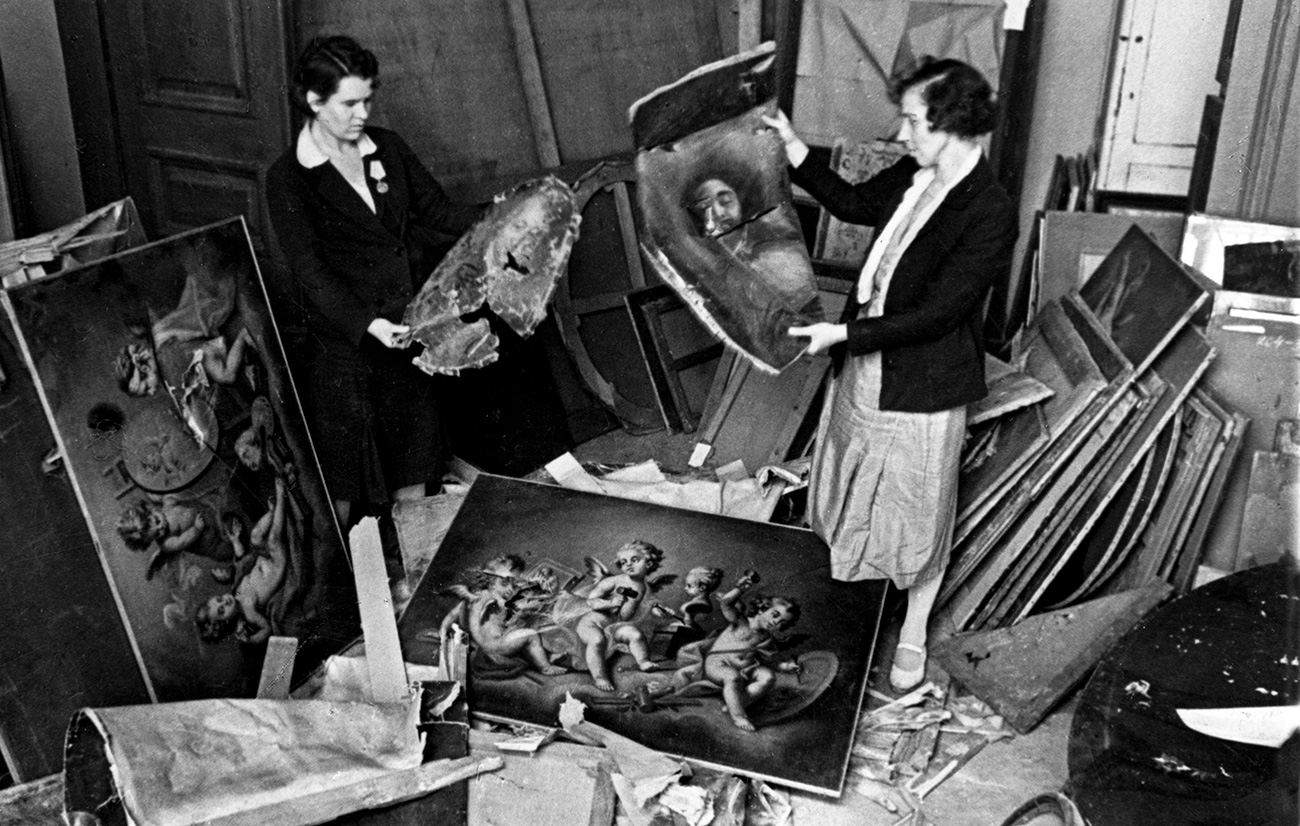 Getty images
Getty images
It was not only people that required protection. Workers at the city’s famous Hermitage Museum removed priceless masterpieces from their frames and hid them in the museum's basement during the war.
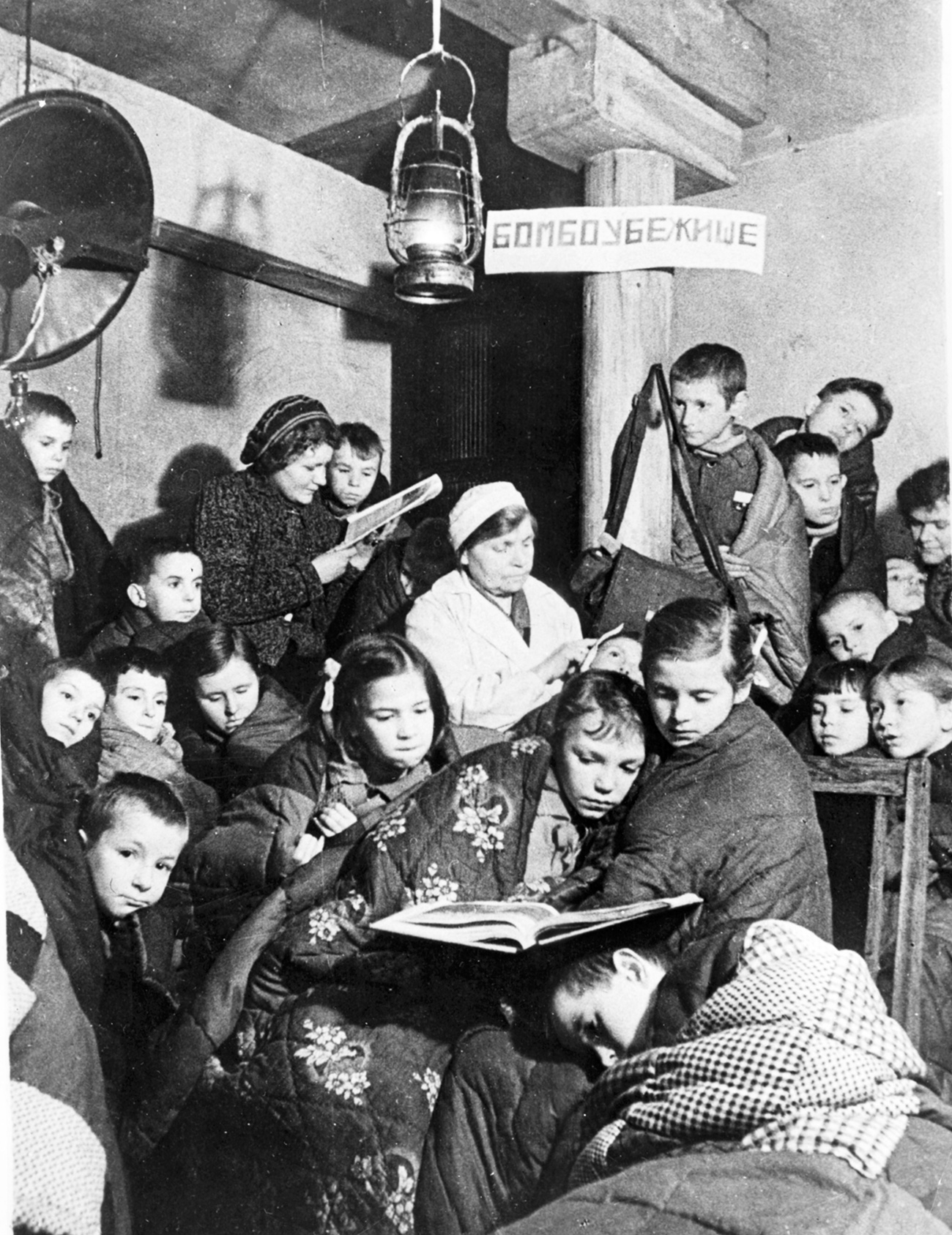 Getty images
Getty images
People sheltered from air raids in cellars across the city.
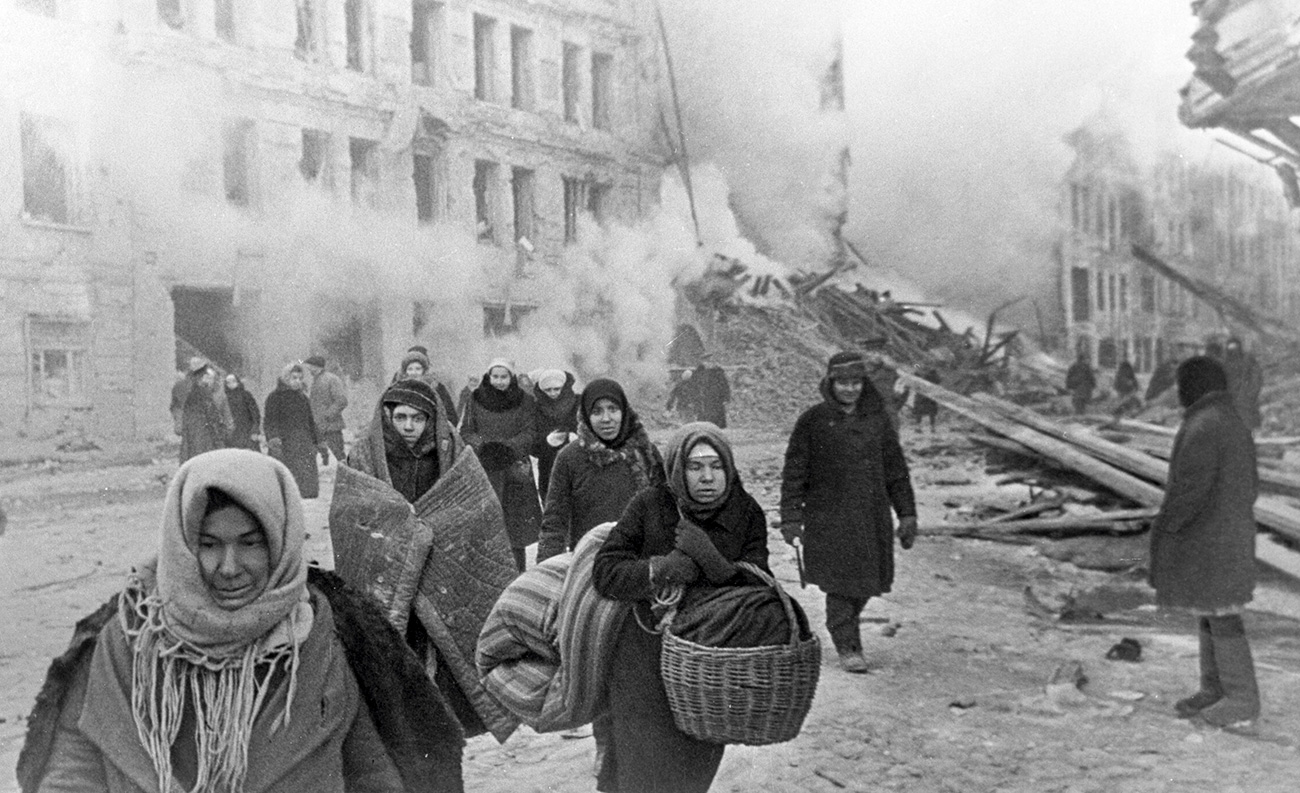 Boris Kudoyarov/RIA Novosti
Boris Kudoyarov/RIA Novosti
Loudspeakers warned residents of incoming artillery fire. A rapid metronome signal marked the beginning of raids; a slower signal the all clear.
 Grigoriy Chertov/RIA Novosti
Grigoriy Chertov/RIA Novosti
Artillery and bomb damage left gaping holes in buildings. Patriotic posters were put up on the facades of ruined buildings to warn residents of danger zones - and to partially cover up the unsightly scenes.
If using any of Russia Beyond's content, partly or in full, always provide an active hyperlink to the original material.
Subscribe
to our newsletter!
Get the week's best stories straight to your inbox